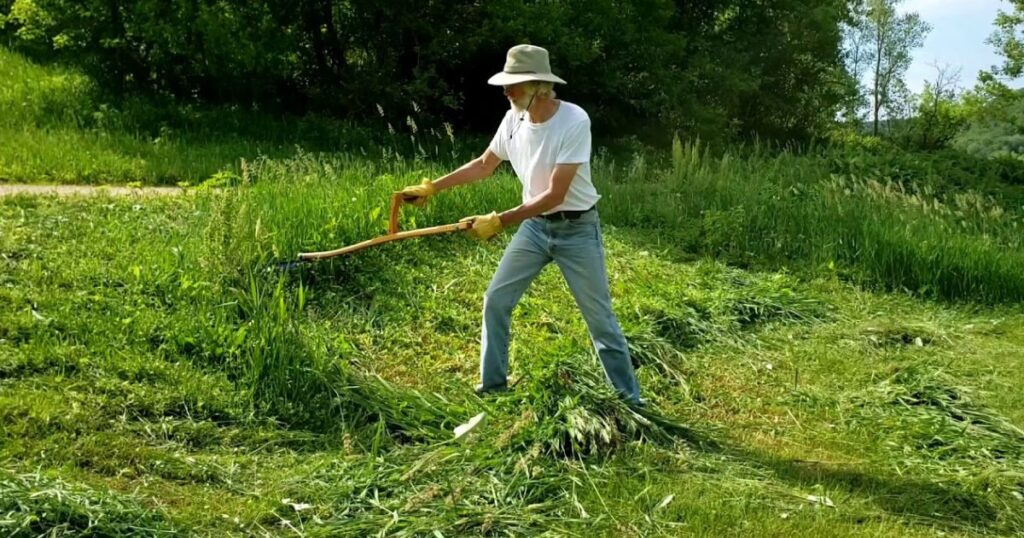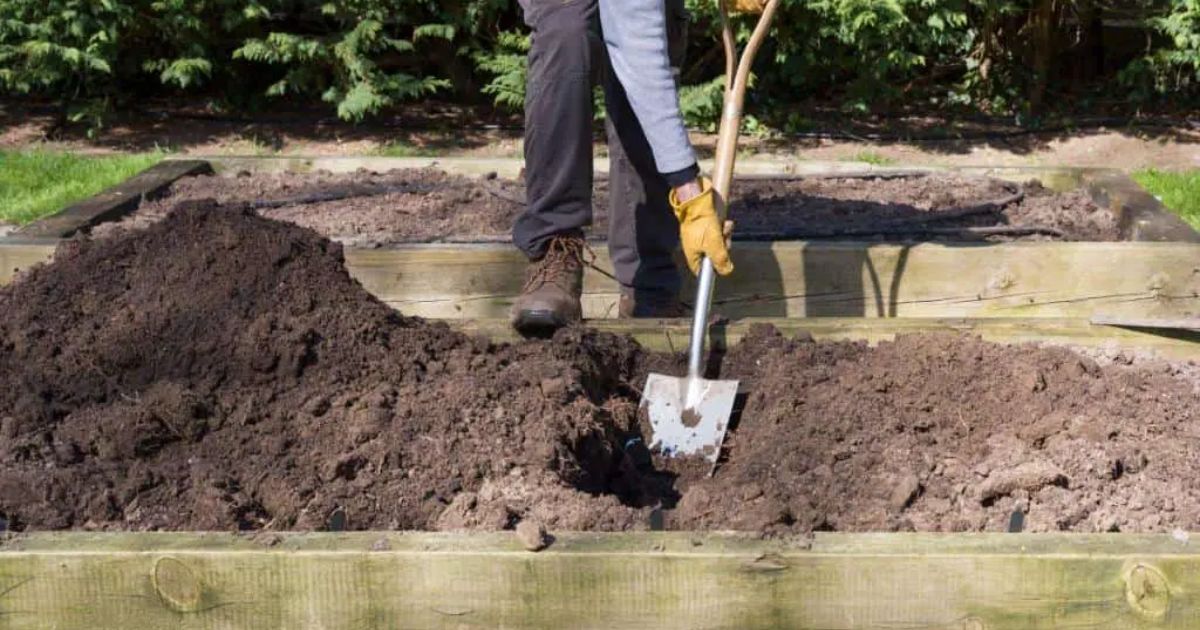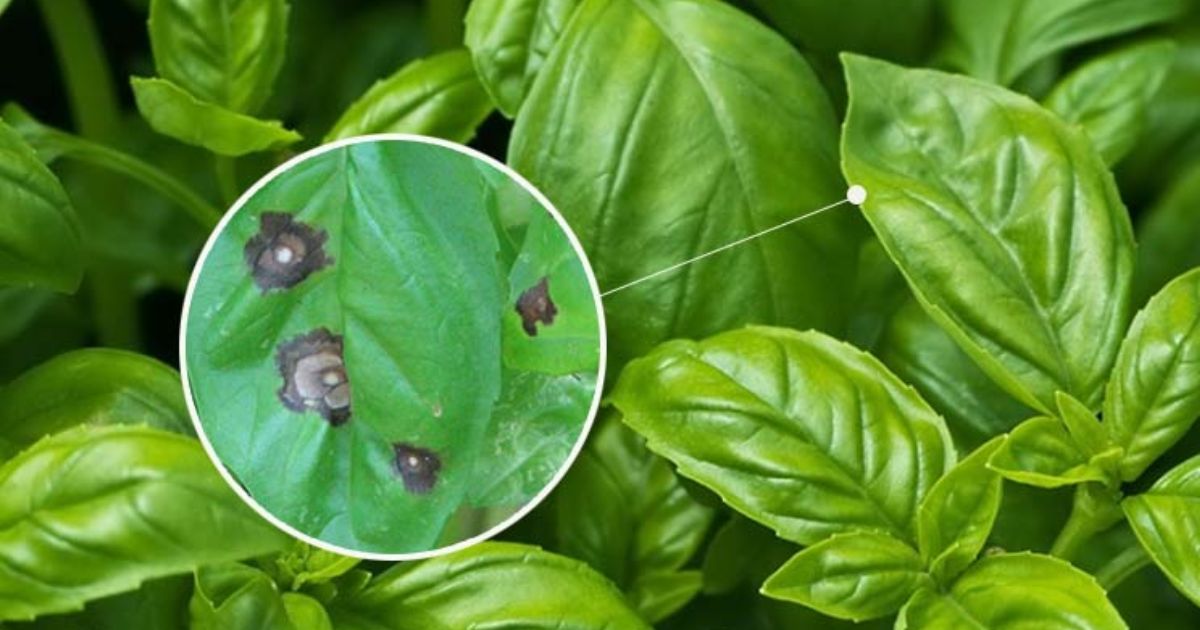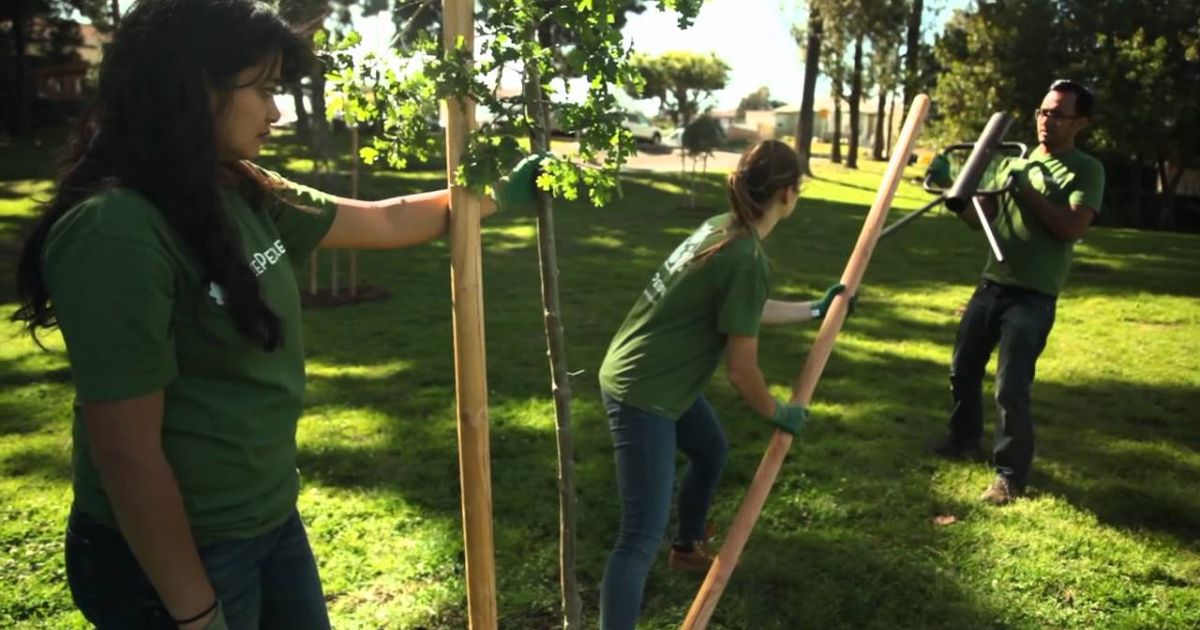Overgrown grass can quickly turn a beautiful lawn or garden into an untidy, unruly space. When grass grows too tall, it can hide weeds, attract pests, and even make mowing more difficult if left unchecked. Cutting overgrown lawn tips requires a different approach than regular lawn maintenance to avoid damaging your mower, stressing the grass, or creating an uneven lawn.
In this guide, we’ll walk you through everything you need to know to safely and effectively cut very tall grass. From choosing the right tools and preparing your lawn to step-by-step mowing techniques and post-cut care, you’ll learn how to transform an overgrown area into a neat, healthy lawn. Whether you’re dealing with a small backyard or a large neglected field, these tips will help you get the job done efficiently and safely.
Understanding Tall Grass
Before you start cutting, it’s essential to understand why grass becomes very tall and what challenges it can pose.
Why Grass Grows Too Tall
- Lack of Regular Mowing: Grass left uncut for weeks or months can quickly become overgrown.
- Favorable Weather: Warm temperatures and adequate rainfall can cause rapid growth.
- Fertile Soil: Rich, nutrient-dense soil encourages faster and taller growth.
Types of Grass That Grow Tall
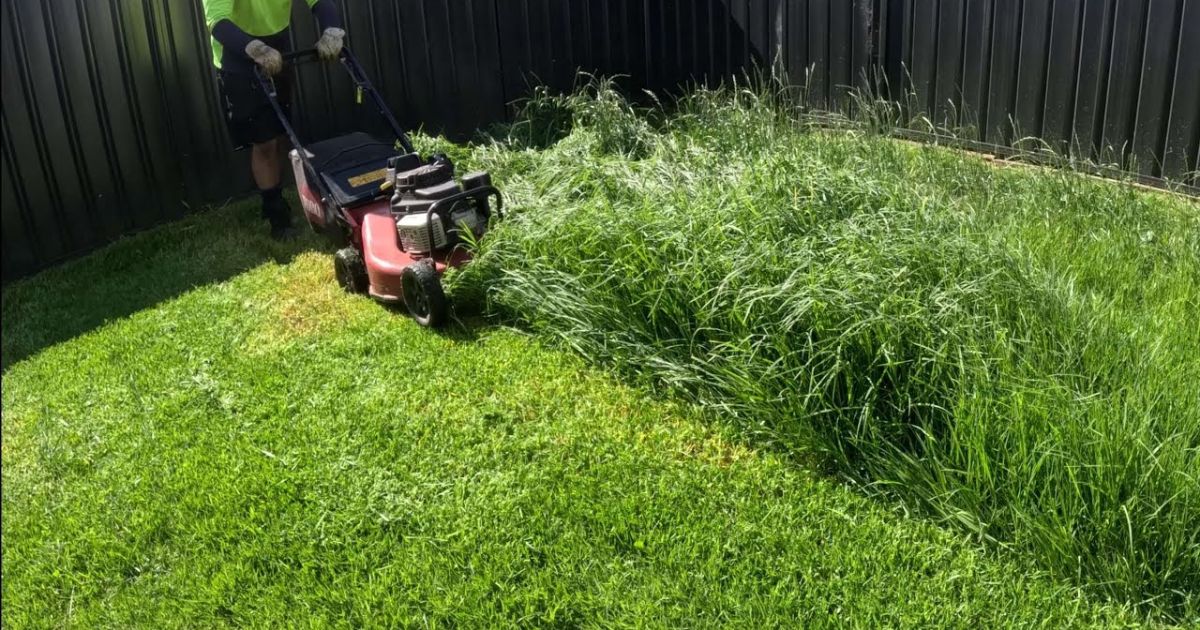
- Some grass species naturally grow taller than others, such as fescue, ryegrass, or ornamental grasses.
- Identifying your grass type helps Tools for tall grass mowing you determine the best cutting height and method.
Problems Caused by Tall Grass
- Weeds: Overgrown grass can give weeds a chance to thrive.
- Pests: Tall grass can harbor insects, Why Scarifying Your Lawn Can Fix Grass Problems Fast rodents, and other pests.
- Uneven Lawn: Cutting extremely tall grass without proper technique can lead to patchy or damaged areas.
- Hidden Hazards: Tall grass may conceal rocks, branches, or holes that can damage equipment or cause injuries.
Understanding these factors helps you approach cutting with the right strategy, ensuring your lawn stays healthy, even, and visually appealing.
Tools You’ll Need
Cutting very tall grass requires the right tools to make the job easier, safer, and more effective. Using inadequate equipment can damage your lawn, slow down the process, or even pose safety risks. Here’s what you’ll need:
Lawn Mower
- Rotary or Reel Mower: Suitable for most backyards. For very tall grass, a rotary mower with adjustable height works best.
- Tip: Avoid trying to cut all the grass at once. Trim tall grass in stages to prevent overloading the mower.
String Trimmer / Weed Eater
- Perfect for edges, corners, and areas the lawn mower can’t reach.
- Ideal for trimming around trees, fences, and flower beds after the main mowing.
Garden Shears or Scythe
- For extremely tall or dense grass in overgrown areas, How to Prevent Termites After Cutting Down a Tree hand tools such as shears or a scythe allow for controlled cutting.
- Can be slower but are safer for delicate areas and prevent mower jams.
Rake or Leaf Blower
- To clear-cut grass and debris after mowing.
- Helps prevent the buildup of clippings, which can smother healthy grass.
Safety Gear
- Gloves: Protect your hands from thorns, stones, or sharp edges.
- Boots: Sturdy footwear keeps feet safe from sharp tools or hidden debris.
- Goggles: Essential when using a string trimmer or mower to protect your eyes from flying grass and debris.
- Long Pants and Long-Sleeve Shirts: Reduce skin exposure to insects, scratches, and irritation from tall grass.
Having all the right tools ready before you start will make cutting very tall grass safer, faster, and more efficient.
Preparing Your Lawn
The secret to operating safely and effectively is planning. Lawn care for overgrown grass Cutting very tall grass. Taking a few minutes to prep the area can prevent mower damage, injuries, and uneven cuts.
Inspect the Area for Obstacles
- Walk through your lawn and remove any rocks, sticks, toys, or garden tools.
- Hidden objects in tall grass can damage your mower or pose safety hazards.
Check the Grass Condition
- Decide whether the grass is dry or slightly damp. Dry grass is generally easier to cut, while wet grass can clump and jam the mower.
- Avoid cutting immediately after heavy rain to prevent slipping and mower clogging.
Clear Debris
- To remove fallen leaves, use a leaf blower or a rake. , Top 15 Small Evergreen Flowering Shrubs for Tiny Yards branches, or thick debris.
- This ensures a smoother cut and prevents grass from getting tangled in your equipment.
Decide on a Cutting Pattern
- Plan how you’ll mow the area to avoid missing spots.
- For large lawns, divide the space into sections and work methodically from one end to the other.
- Overlapping slightly with each pass helps prevent uncut patches.
Adjust Your Equipment
- Increase the mower’s cutting height. For the first pass, this reduces strain on the machine and prevents scalping.
- Prepare your string trimmer, shears, or scythe for edges and hard-to-reach areas.
By properly preparing your lawn, you’ll make cutting very tall grass safer, faster, and more efficient, setting the stage for a neat and healthy finish.
Step-by-Step grass Cutting Guide
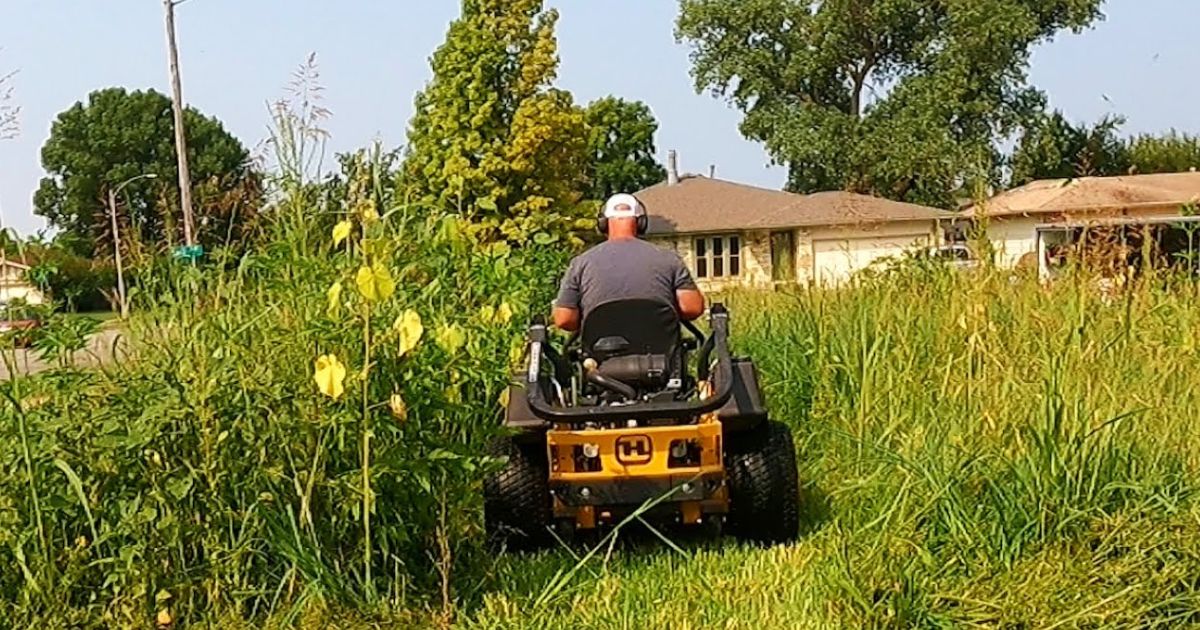
Cutting very tall grass requires patience and a gradual approach to avoid damaging your lawn or equipment. Follow these steps for the best results:
Step 1: Trim Edges and Hard-to-Reach Areas
Start with a string trimmer or garden shears to clear edges, corners, and areas around trees, fences, or flower beds. This prevents your mower from getting stuck and ensures a uniform finish.
Step 2: Cut in Stages
For extremely tall grass, never try to cut it all at once. Set your mower to its highest cutting height and remove one-third of the grass at a time. Gradually lower the blade with each pass until you reach your desired height. This method prevents scalping and reduces stress on the grass.
Step 3: Use a Mower for the Main Area
Work in small sections, mowing in straight lines or a crisscross pattern for even coverage. Keep an eye out for hidden obstacles.
Step 4: Rake or Blow Away Clippings
After mowing each section, remove clippings to prevent smothering the grass. How to Fix Your Grass Use a rake or leaf blower to keep the area clear.
Step 5: Final Touches
Go over any remaining tall patches with a trimmer or shears. Step back frequently to check for uneven spots and ensure a clean, uniform lawn.
By following these steps, even the tallest grass can be safely and efficiently tamed.
Safety Tips
Cutting very tall grass can be physically demanding and potentially hazardous if proper precautions aren’t taken. Following Safety tips for mowing tall grass helps prevent accidents and ensures a smoother, more efficient job.
Wear Protective Gear
Always wear sturdy gloves, long pants, and closed-toe shoes or boots to protect against sharp objects, thorns, or debris hidden in tall grass. It is imperative to wear safety goggles or a face cover when using a mower or string trimmer How to Trim an Overgrown Magnolia Tree to prevent injury from flying grass and small stones.
Inspect the Area Carefully
Before starting, walk through your lawn to remove any obstacles such as rocks, sticks, or garden tools. Hidden objects can damage equipment or cause accidents if struck during mowing.
Use Tools Correctly
Follow manufacturer instructions for all equipment. Ensure your mower blades are sharp, string trimmer lines are intact, and shears or scythes are in good condition. Avoid overloading your mower by cutting too much grass at once.
Maintain Good Posture and Take Breaks
Cutting tall grass can strain your back and arms. How to Trim a Tree That Is Too Tall Use proper lifting and mowing techniques, and take regular breaks to prevent fatigue and injury.
Be Mindful of Slopes and Wet Grass
Avoid mowing on steep slopes or wet grass to lessen the possibility of falling or losing control of your apparatus.
By following these safety tips, you’ll reduce the risk of injury and make cutting very tall grass a manageable, practical task.
Aftercare for Your Lawn
Proper aftercare is essential to help your lawn recover from cutting very tall grass Lawn aftercare tips and to promote healthy, even growth in the future.
Watering
After mowing, water your lawn lightly to reduce stress on the grass, especially if the weather is warm or dry. Avoid heavy watering immediately after cutting, as this can lead to soil compaction or encourage fungal growth.
Fertilizing
Applying a balanced lawn fertilizer can replenish nutrients lost during rapid growth. Focus on nitrogen-rich fertilizers to promote healthy, green growth. Be careful not to over-fertilize, as newly cut grass can be more sensitive.
Aeration
Tall grass often develops dense root systems and compacted soil. Lightly aerate your lawn with a garden fork or aeration tool to improve airflow, water infiltration, and nutrient movement. This helps roots recover and encourages stronger, healthier grass.
Remove Clippings
Rake or collect leftover clippings to prevent them from smothering your lawn. Excess clippings can create dead patches or harbor pests and fungi.
Monitor for Pests and Weeds
Tall, overgrown grass can hide pests or weed seeds. Keep an eye on your lawn and treat any infestations promptly.
Establish a Regular Mowing Schedule

To prevent future overgrowth, mow your lawn consistently. During the busiest growing seasons, once a week is best. Maintaining a regular schedule ensures your lawn stays neat, healthy, and easier to manage.
By following these aftercare steps, your lawn will not only recover quickly but also remain lush and vibrant throughout the growing season.
Conclusion
Cutting very tall grass can feel daunting, but with the right tools, preparation, and techniques, it’s completely manageable. By understanding why grass becomes overgrown, properly preparing your lawn, and following a step-by-step mowing approach, you can restore your lawn to a neat, healthy condition.Wearing safety gear should always come first. Inspect your lawn for hidden hazards, and take breaks to avoid fatigue. Aftercare is equally essential: watering, fertilizing, aerating, and maintaining a regular mowing schedule will help your grass recover quickly and stay lush throughout the season.
Whether you’re tackling a small backyard or a large, neglected field, these tips will save time, prevent lawn damage, and make future maintenance much easier. With patience and consistent care, even the tallest, most overgrown grass can be tamed into a beautiful, well-kept lawn that enhances your garden’s overall appearance and health.
FAQ
Can I cut very tall grass with a regular lawn mower?
Yes, but it’s best to cut in stages and set your mower to its highest setting for the first pass. Cutting all the grass at once can strain the mower and damage the lawn.
Is it better to cut wet or dry tall grass?
Cutting dry grass is simpler and less likely to clog or jam your mower. Avoid mowing immediately after heavy rain to reduce the risk of slipping and equipment issues.
How do I avoid damaging my lawn when cutting very tall grass?
Trim edges first, cut in stages, gradually lower your mower’s blade, and remove clippings. This prevents scalping and uneven patches.
What safety precautions should I take?
Wear gloves, boots, and eye protection. Inspect the lawn for hidden objects, use tools correctly, and avoid mowing on steep slopes or wet grass.
Can overgrown grass recover quickly after cutting?
Yes, with proper aftercare such as watering, fertilizing, aerating, and maintaining a regular mowing schedule, your lawn can recover and remain healthy.

